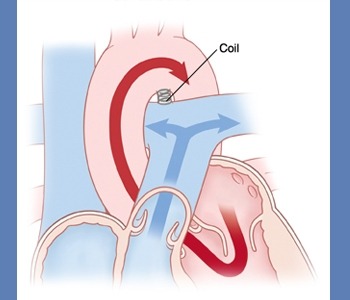Patent Ductus
WHAT IS PATENT DUCTUS ARTERIOSIS (PDA)?
Patent ductus arteriosus (PDA) is a congenital heart disease that frequently escapes detection until patient reached adulthood. This defect allows blood to mix between the pulmonary artery and the aorta. Before birth an open passageway (the ductus arteriosis) exists between these two blood vessels. Normally this closes within a few hours of birth. When this doesn’t happen, some blood that should flow through the aorta and on to nourish the body returns to the lungs. A ductus that doesn’t close is quite common in premature infants but rather rare in full-term babies.
WHAT ARE THE EFFECTS OF PDA?
If the ductus arteriosus is large:
- A child may tire quickly,
- Grow slowly,
- Catch pneumonia easily and
- Breathe rapidly.
In some children symptoms may not occur until after the first weeks or months of life.
WHAT TREATMENT OPTIONS ARE AVAILABLE FOR THIS?
Patent ductus arteriosus (PDA) accounts for approximately 8% of all congenital heart disease. It is more common in female and is asymptomatic in most of the patients. Therefore, it commonly escapes detection until adulthood when murmur was incidentally found.
Non Surgical Procedure
If the ductus arteriosus is small, the child seems well. Percutaneous transcatheter closure of PDA has been established as a safe and effective alternative to surgical ligation. Compared with the traditional open-heart surgical ligation, percutaneous approach has the advantages of being less invasive, associated with shorter procedural and recovery time, and has the better cosmetic outcome. Successful closure of such defects is likely to obviate the risk of endocarditis and arrhythmias in the long run and ensure a normal life span. Inpatient with large communication, it also helps to decrease left-to-right shunting, and thereby prevent pulmonary hypertension and cardiac failure.
Surgery
If surgery is needed, the surgeon can close the ductus arteriosus by tying it, without opening the heart. If there’s no other defect, this restores the circulation to normal.


